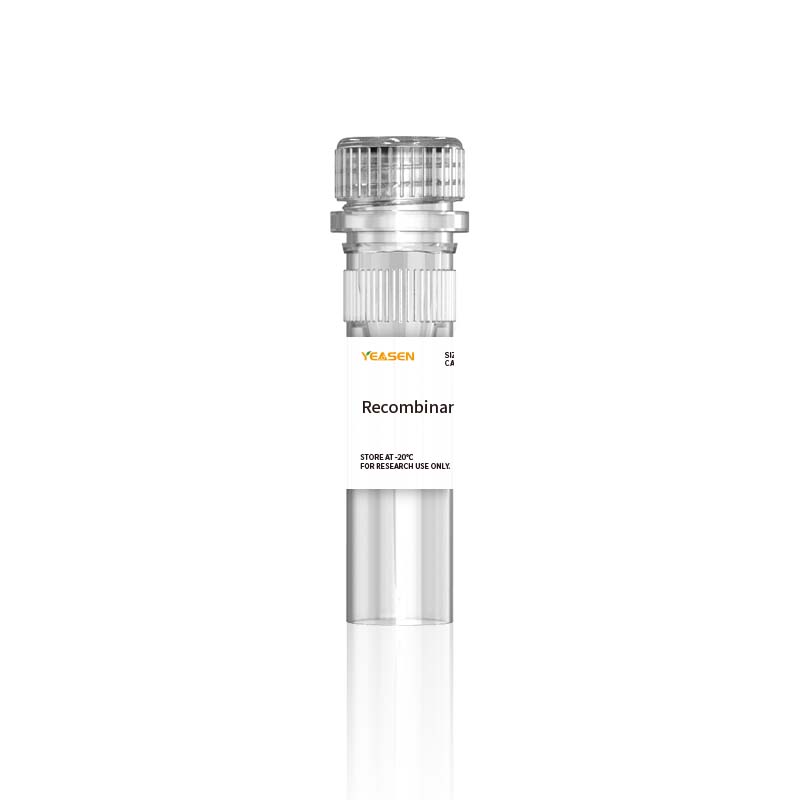Description
FAP (also known as seprase) is a 95 kDa Type II transmembrane serine protease that is structurally related to dipeptidyl peptidase IV (DPPIV/CD26). Within the extracellular domain (ECD), human FAP shares 90% amino acid (aa) sequence identity with mouse and rat FAP. Alternative splicing of human FAP generates a truncated isoform that consists of the C-terminal 239 residues of the ECD. A soluble and enzymatically active form of FAP known as antiplasmin-cleaving enzyme (APCE) circulates in human plasma. FAP is expressed on reactive stromal fibroblasts in tumor tissue and wound healing and on synoviocytes in rheumatoid arthritis. It exhibits dipeptidyl peptidase activity with substrate specificity similar to DPPIV, which is specific for N-terminal Xaa-Pro sequences. FAP is also an endopeptidase that can degrade Gelatin, Collagens I and IV, Fibronectin, and Laminin as well as several peptide hormones (e.g. Neuropeptide Y, Brain Natriuretic Peptide, Substance P, Peptide YY, and Incretins). The enzymatic activity is dependent on FAP association with DPPIV on the cell surface. The matrix-dedgrading activity of FAP contributes to tumor cell migration and invasion. In addition, FAP can enhance tumor cell growth by limiting the development of anti-tumor immunity.
Specifications
|
Synonyms |
FAP; FAPalpha; SIMP; Seprase; APCE; DPPIV; DPPIVA; FAPA |
|
Uniprot No. |
Q12884.1 |
|
Source |
Recombinant Human FAP Protein is expressed from HEK293 Cells with His tag at the N-terminal. It contains Leu26-Asp760. |
|
Molecular Weight |
Approximately 86.1 kDa. Due to glycosylation, the protein migrates to 90-100 kDa based on Tris-Bis PAGE result. |
|
Purity |
> 95% as determined by SDS-PAGE and HPLC. |
|
Activity |
ELISA Data:Immobilized Human FAP, His Tag at 0.5μg/ml (100μl/Well) on the plate. Dose response curve for Anti-FAP Antibody, hFc Tag with the EC50 of 25.8ng/ml determined by ELISA. Bioactivity: Measured by its ability to convert the substrate benzyloxycarbonyl-Gly-Pro-7-amido-4-methylcoumarin (Z-GP-AMC) to Z-Gly-Pro and 7-amino-4-methylcoumarin (AMC). The specific activity is >3000 pmol/min/µg |
|
Endotoxin |
< 1.0 EU per 1μg of the protein by the LAL method. |
|
Formulation |
Lyophilized from 0.22μm filtered solution in 20mM Tris, 250mM NaCl (pH 8.2). Normally 8% trehalose is added as protectant before lyophilization. |
|
Reconstitution |
Centrifuge tubes before opening. Reconstituting to a concentration more than 100 μg/mL is recommended (usually we use 1 mg/mL solution for lyophilization). Dissolve the lyophilized protein in distilled water. |
Storage
The product should be stored at -20~-80℃ for 1 year from date of receipt.
2-7 days, 2 ~8 °C under sterile conditions after reconstitution.
3-6 months, -20~-80℃ under sterile conditions after reconstitution.
Recommend to aliquot the protein into smaller quantities when first used and avoid repeated freeze-thaw cycles.
Note
1.Avoid repeated freezing and thawing.
2.Please operate with lab coats and disposable gloves, for your safety.
3.This product is for research use only.
Product Data


Payment & Security
Your payment information is processed securely. We do not store credit card details nor have access to your credit card information.
Inquiry
You may also like
FAQ
The product is for research purposes only and is not intended for therapeutic or diagnostic use in humans or animals. Products and content are protected by patents, trademarks, and copyrights owned by Yeasen Biotechnology. Trademark symbols indicate the country of origin, not necessarily registration in all regions.
Certain applications may require additional third-party intellectual property rights.
Yeasen is dedicated to ethical science, believing our research should address critical questions while ensuring safety and ethical standards.

